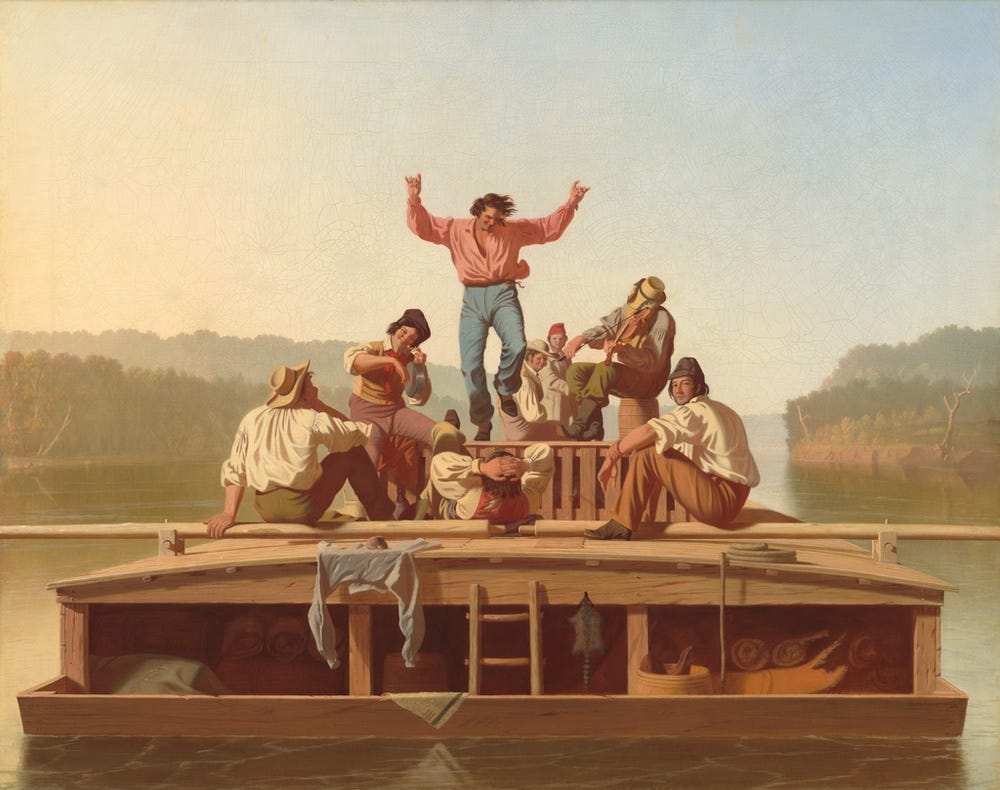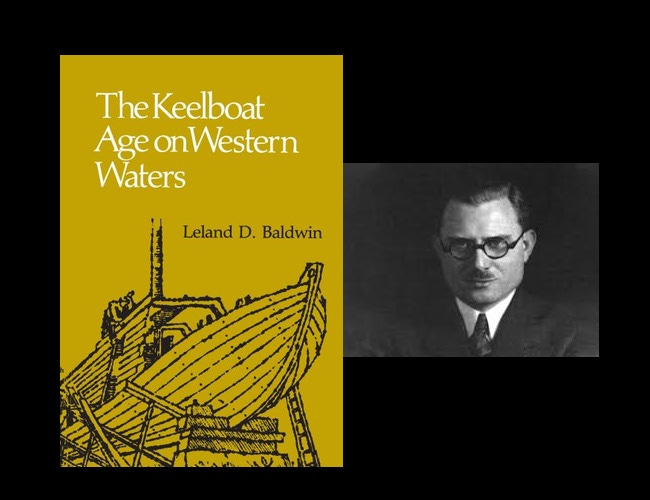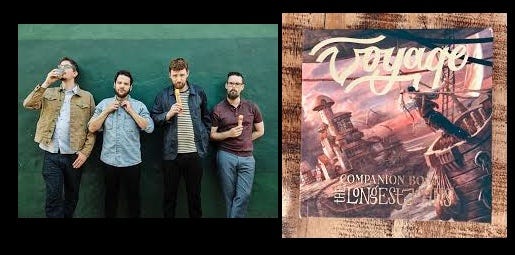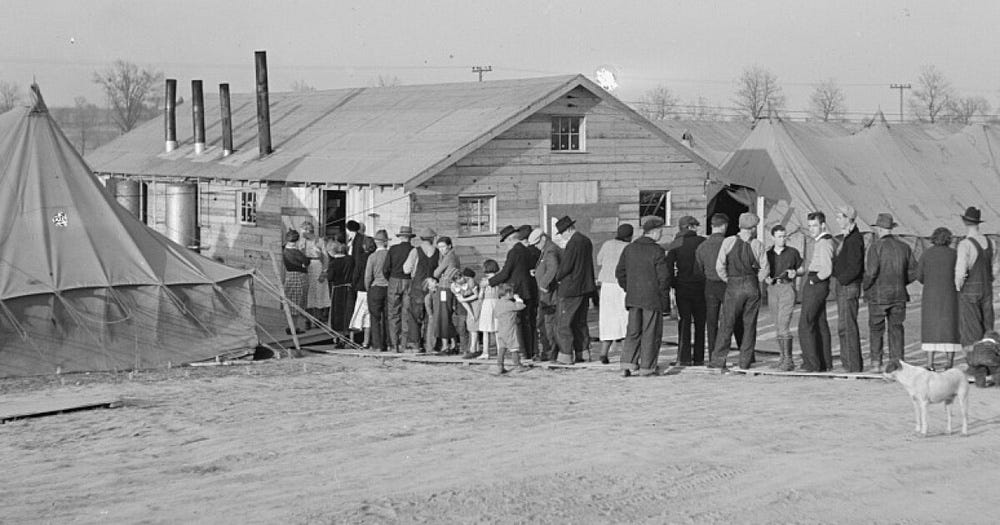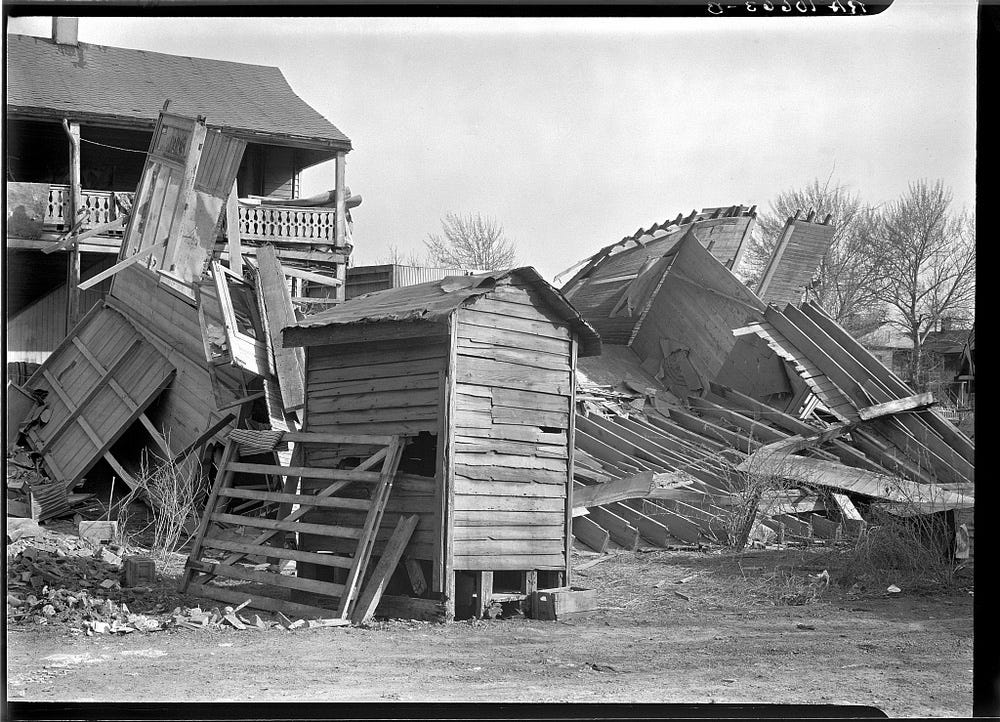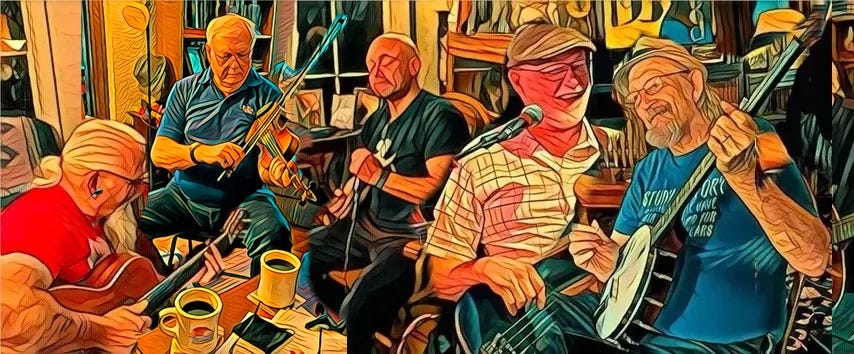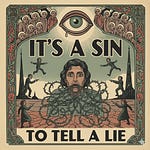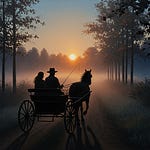Jack Nuckols, our newest band mate, brought us this song, a wonderful reflection on the early history of boating up and down the Ohio River, which flows by the communities in our valley.
Hearing it, it would be natural for you to assume that “Shawneetown” is a old traditional tune. Actually, though, it is largely a 1970s composition by folk artist Dillon Bustin.
The Song’s Roots
True, Bustin based his first verse and chorus on fragments published in 1828, which he found quoted in Leland D. Baldwin’s 1941 book, The Keelboat Age on Western Waters.
Some rows up, but we rows down,
All the way to Shawneetown,
Pull away — pull away!
Hard upon the beech oar!—
She moves too slow!—
All the way to Shawneetown,
Long while ago.
But then, combining these bits and pieces, Bustin composed the tune and several additional verses for the song we have now.
The Composer
Besides being a folklorist, singer and songwriter, Bustin is an accomplished filmmaker and playwright.
He has made four films in collaboration with Kane-Lewis Productions: Tough, Pretty or Smart: A Portrait of the Patoka Valley Boys (1981); Water from Another Time (1982); Add & Mabel’s Punkin Center (1984), and The Pearl Fisher (1985). Each depicts whimsical creativity and quality of life in rural Indiana.
After obtaining a degree in folklore and anthropology at Indiana University, Bustin returned to his native Massachusetts to be program coordinator at the state’s council on the arts.
Recordings
Jack learned the Bustin song from the new Voyage album by the British folk group called The Longest Johns, known especially for their performances of sea shanties.
But “Shawneetown” has a much older studio history. In the fact, the first recording of it — made shortly after its composition — probably was the 1978 rendering by American folk duo Malcolm Dalglish and Grey Larsen on their First of Autumn album.
Meanwhile, in the Floodisphere, the song has even closer ties. Our dear friends Dave Para and his late wife Cathy Barton included “Shawneetown” on their 10th studio album — our all-time favorite — their delightful Living on the River disc, which they released in 2000.
But Wait …. Uh, Where’s That Again?
We assume that folks who live on our river, the beautiful Ohio, all know where Shawneetown is. In case you don’t, though, here’s an important footnote on the song.
Shawneetown is in southern Illinois, just beyond where the Ohio River meets the Wabash. As the first Anglo settlement on the Ohio, it was a major trade center for settlers and Native Americans in the 1820s. Nearby salt mines provided Gallatin County's major commodity.
Keelboats were the most efficient commercial boats in those days, but the vessels had to be pulled back upriver against the current on the return trips, grueling work for the strong, often rowdy crews. Floating downriver, a long oar (“the beach oar” referred to in the song’s chorus) was used to guide the craft as well as to maneuver it off mud slicks and snags.
Shawneetown served as a government administrative center for the Northwest Territory in the early 19th century.
The area is subject to frequent flooding. After being completely inundated in the 1937 Flood (the natural disaster, not the band), the town was moved three miles inland to its current location; however, today a small village — called Old Shawneetown — remains on the original site.
Our Take on the Tune
When Jack Nuckols joined the band late last year, we knew his dynamic drumming would bring spark and sparkling to our jazzy repertoire, but we had a secret agenda as well.
We hoped we could also persuade Jack to dust off that fiddle he last played… oh, 20 years ago? … so he could bring it to the mix on our folkier numbers.
Well, not only has he done that, Jack has started suggesting tunes — like this one — that would fit his fiddling.



